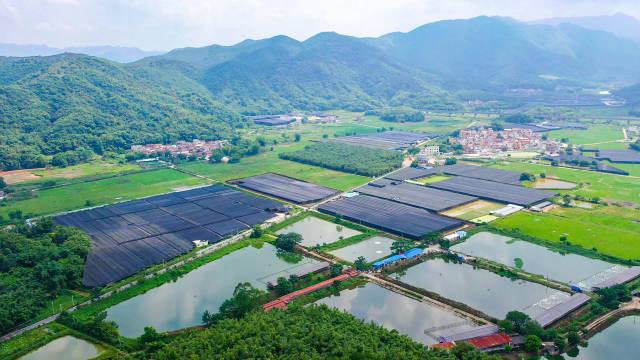To deal with the climate crisis, you can choose to realize the local seasonal food through the food
Author:China Green Fair Time:2022.06.25
The greenhouse gas emissions of the agricultural grain system refers to the emissions generated by farm production activities, land use changes, and before -production and post -production. The first two parts are emissions generated by agricultural land, and the third part refers to the discharge of the food supply chain, including the production, processing, transportation, consumption and processing of grain. It is worth noting that with the increase in international food trade, the greenhouse gas emissions during food transportation have also increased year by year. Recently, the Chinese Department of Biological Diversity Protection and Green Development Foundation (referred to as China Green Fair, Green Club) International Department learned from an internationally renowned journal to study a research on food transportation gas emissions. Research suggestions: In order to reduce everyone's pair of people's pairs For climate, please buy local seasonal food. The article is compiled as follows, for friends who are interested in.

Picture source: shutterstock, phys.org
The latest research found that people in rich countries like to consume various anti -season agricultural products imported from overseas, which is leading to increased global greenhouse gas emissions.
The research report revealed that the greenhouse gas emissions generated by grain transportation account for nearly one -fifth of the total discharge of the grain department, and the "contribution" of rich countries on this issue is even more contributed.
This study is the most detailed record in similar studies. It estimates the carbon footprint of global food trade and tracks a series of foods in millions of supply chains.
Since 1995, global agricultural and food trade has doubled, and international food trade accounts for 19%of global food consumption. It can be clearly seen that consumption of local agricultural products is a powerful means and effective way to deal with climate change.
The concept of "food mileage" is used to measure the distance from production to consumption, that is, food journey. We can evaluate the relevant environmental impact or "carbon footprint" from "food mileage".
Globally, the greenhouse gas emissions generated by foods each year account for about 30%of the total carbon emissions generated by humans. The sources of these greenhouse gas emissions include changes in transportation and land use (such as cutting trees) and food production.
In the study, we used a more comprehensive new framework, which involved unprecedented details, including: 74 countries or regions, 37 economic departments, four transportation methods: water, railway, highway, aviation, more than 3000 more than 3000 Thousands of "food mileage": one food from one place to another.
The results of the study show that global greenhouse gas emissions generated by "food mileage" each year are about 3 billion tons, accounting for 19%of the total food emissions. This is 7.5 times higher than the previous estimate. Among them, about 36%of food transportation emissions are caused by global fruits and vegetable transportation, which is almost doubled in the production process. Because vegetables and fruits need to control temperature during transportation, this makes their food mileage discharge higher.
In general, in terms of population proportion, the "food mileage" generated by high -income countries is relatively high. They accounted for 12.5%of the world's population, but generated 46%of international food mileage emissions.
Some large and emerging economies dominate the world's food trade. Brazil is the largest food mileage exported middle school, followed by Australia, India and Argentina. Australia is the main exporter of the world's fruits and vegetables. In contrast, low -income countries, which account for about half of the global population, only cause 20%of food transport greenhouse gas emissions.
So far, sustainable food research is mainly concentrated on greenhouse gas emissions of meat and other animal foods compared with plant foods. However, our research results show that eating local planting and production foods are also important to reduce greenhouse gas emissions related to food transportation. "Local" usually refers to the range of about 161 kilometers.
At the same time, we admit that some areas in the world cannot achieve self -sufficient food supply. International trade can play an important role in providing nutritional foods and alleviating unsafe food for disadvantaged groups in low -income countries.
"Food mileage" should not be regarded as the only indicator of environmental impact. For example, imported foods produced in a sustainable manner may have less impact on the environment than greenhouse gas emissions on the environment.
However, there is still a lot of room for reducing food transportation emissions, especially in a richer country. Potential measures include: carbon fixed price and import tariffs, investment environmental vehicles, encouraging enterprises to reduce emissions and formulate regulations in the production and distribution chain, and encourage more urban agricultural projects.
At the same time, consumers can also reduce the emissions of food transportation by using sustainable diet structure. For example, when buying anti -seasons or cross -season fruits and vegetables, you can consider buying local products instead of products that are transported overseas and long -distance transportation
With the growth of the global population, the problem of food transportation emissions will only worsen. Government, enterprises and ordinary people must work together to ensure that the production and consumption of food will not exacerbate climate change.
For the original text: https://phys.org/news/2022-06-wORLD-AFFLUENT-LOCAL-FOOD-TACKLE.HTML
Compilation: SARA
Review: lucy
Responsible editor: Pierre
- END -
Lingchuan County Meteorological Bureau issued a thunderstorm and blue warning [Class IV/General]
At 16:20 on June 8, 2022, Lingchuan County, Shanxi Province issued a thunderstorm blue warning signal.At present, Zezhou and Gao Ping have a strong match against Liuyun Group and moved to our county.
Father's love is like Lan: Father receives flower gifts, flower farmers bloom

This year's Father's Day, Father Love Ru orchid became a hot word, and also brough...